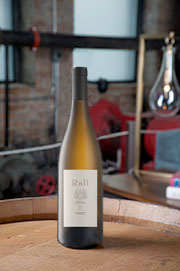- Analysis
- Vineyards
- Vinification and Aging
- Tasting Notes
- 2014 Vintage Notes
Rall Wines 2014 White
Wine of Origin
Coastal Region
Varietals
49% Chenin Blanc, 24% Verdelho, 18% Chardonnay, 9% Viognier
Analysis
Wine Maker: Donovan Rall
Alcohol: 14%
Total Acidity: 5.8
pH: 3.35
Residual Sugar: 3 g/l
Production: 300 cases
Working closely with growers in the Swartland and Stellenbosch area to secure the best possible fruit at the optimal ripeness and balance is the most important and first step in making the Rall Wines. The vineyards are chosen on a combination of factors but the 2 most important aspects are soil type and age of the vines. At the moment the fruit for the wine is sourced from 10 different vineyards mostly in the Swartland region with the main soil type being decomposed granite.
The grapes are picked as early as possible and rushed to the cellar where depending on the varietal it could either be crushed and destemmed or transferred directly into a tiny manually operated basket press to be processed whole bunch. The unsettled juice now goes into older french barrels with nothing but sulphur added at this stage. Fermentation occurs naturally without the addition of any yeasts or nutrients and usually takes between 3 to 9 months to be completed depending on the variety. The wine stays on the lees in barrel with regular battonage for 10 months before blending and bottling.
Ripening occurred at lower than normal sugar levels, which gives the wine the added benefit of great acidity and freshness. Bright aromatics including fresh apricot, orange oil, and apple blossom are perfectly supported by a strong mineral core from the dominating Swartland Chenin Blanc. The rich texture and delicate floral notes from the Verdelho and Viognier makes this an interesting match with most seafood and Asian inspired dishes.
In 2014 we had a very wet winter which lasted much longer than expected. This resulted in vigorous growth when the temperature eventually started climbing. More rain in January made planning picking dates very tricky. I picked some vineyards earlier or in different stages to avoid the rain. Ultimately, the conditions during the growing season resulted in bigger crops in Swartland compared to 2013. Certainly a vintage with bigger berries, and thinner skins but this doesn’t show in the wines. They have more focus and are more austere than the 2013, which I quite like. 2014 at this stage is showing a real raciness and a mineral edge with an almost saline character we hope for, but don’t always get.

